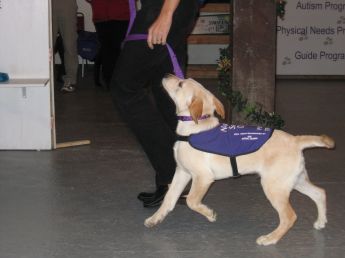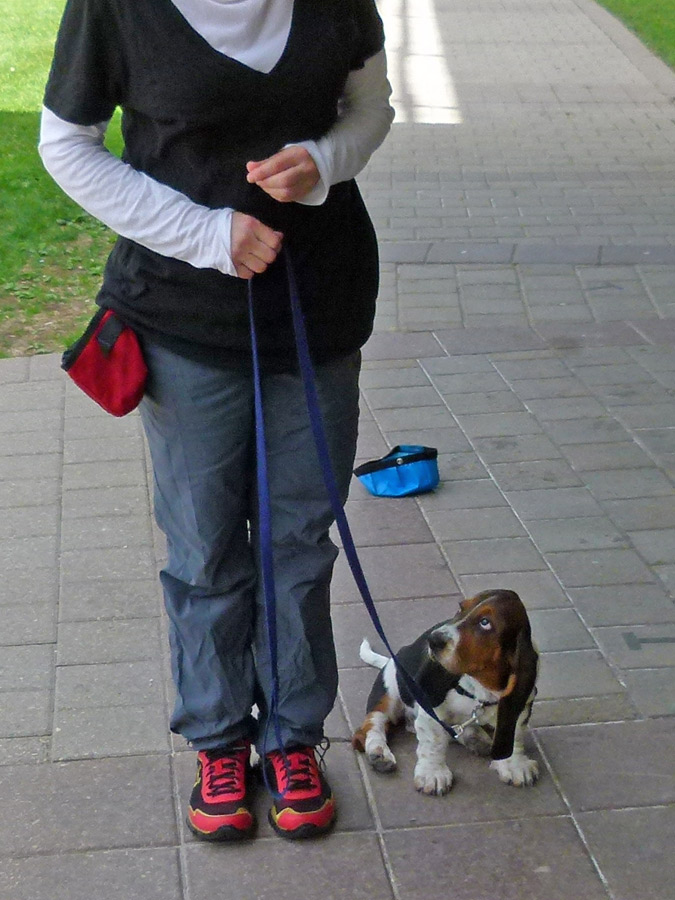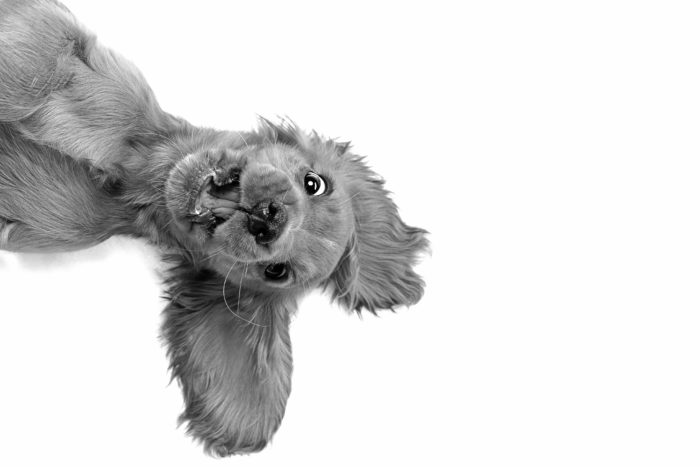Loose Leash

A puppy in training at the National Service Dogs walking on a loose leash.
Walking beside you on a loose leash, watching you, or being calm, cool, and collected is not natural behavior for a puppy. Keep this in mind as you learn to walk together. Also, remember that when a dog feels tension on his leash, he will naturally pull against it. When and wherever it’s safe to do, try using a long line to walk your pup. Often a few extra feet of leash do the trick, like magic, there’s no more pulling.
A well-fitted harness that does not interfere with natural range of motion of the front shoulders. Has no velcro, and with both a front and back attachment is worth exploring when teaching a pup to walk on a loose leash. Attaching your leash to the front clip may help with excess pulling. It also ensures there is no pressure on the delicate puppy’s neck. A dog’s neck is not designed to withstand pressure.

- Hold the leash in your right hand, doubling it over to take up any extra slack so that it does not drag on the floor or have any tension.
- Put your right hand at waist level, close to your belly button.
- Close your left hand over your right hand or let it hang naturally to your side.
- Treats and toys should be in an easy-to-access pouch and/or pocket.
- Read A word about which side your dog should be on, further on in this section.

